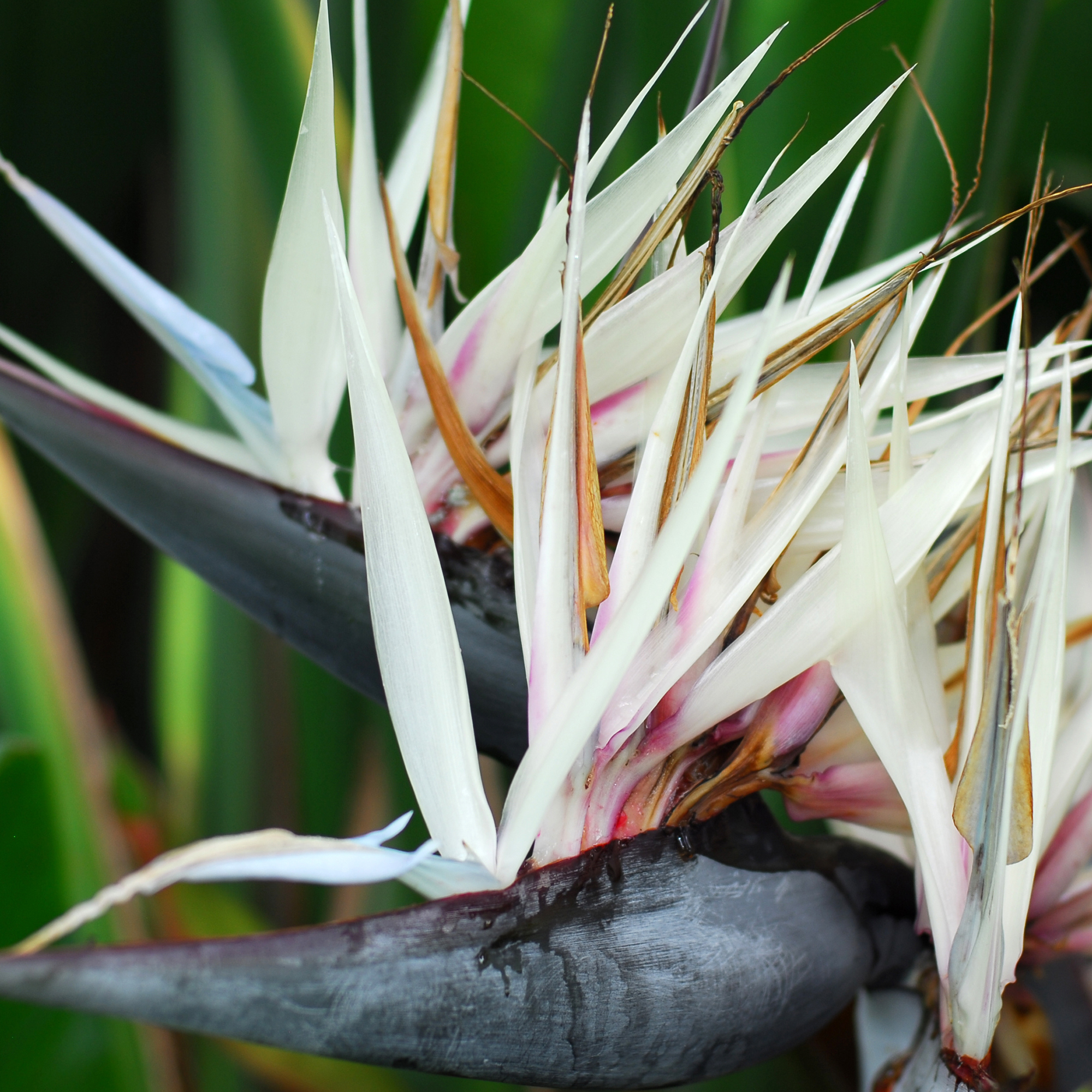Blog

Ask Dr. Phipps: Bird of Paradise Plant
Q: I live in Irwin and obtained 2 potted bird of paradise plants last summer. Based on my research, I believe they are giant white bird of paradise. There are 3 plants in each large pot. I purchased a grow light and successfully over-wintered them last year. The bird of paradise survived and the surrounding plants came back. I have a few questions that I would really appreciate some help with:
- HUGE IMPORTANT QUESTION: It's time to bring them in for the winter and they will no longer fit into my basement under the grow light. They are about 9 - 10 feet tall. Is there any way to safely/selectively cut the tall stalks or some other way to address this issue? They are the stronger thicker ones coming from the center. Or do I need to attempt to find a facility that would over-winter them for me?
- If I need to find a facility, do you know of any local places that can do that type of storage? Any advice you could give me on the over-wintering would be greatly appreciated. I was excited that I was successful over the last winter; but just can't fit them in the basement anymore. I haven't seen them bloom yet and don't want to give up.
If I'm able to find a way to save them until next summer, I have a few general care questions:
- There are some leaves that are browning/yellowing/splitting and looking unhealthy - I have been waiting until they look really bad and attempting to tear them off at the base - they are typically the older leaves on the outside of the growth- if unsuccessful, I cut them as close to the base as possible. Is this the right thing to do?
- Is there some type of fertilizer or supplement that I should be using on giant white bird of paradise to keep them more healthy next summer and prevent the yellowing/browning/breakage? Could that condition be a function of over-under watering?

A: The recommended time to trim the plant is late winter or early spring. Here is some detailed information about pruning. If it has any damage now (you mentioned yellowing and browning leaves), you can prune back those particular leaves but be careful not to harm the trunk of the plant. Do not "tear" them off. Carefully prune them off at their base with clean gardening clippers (disinfect with a little rubbing alcohol and water first). Pruning back dead or yellowing leaves at the place where they meet the trunk will help avoid damage from insects or disease. In addition, if you absolutely have to trim back the plant now for height purposes, try trimming the tallest leaves back to the trunk while leaving the shorter leaves alone. The plant may experience some shock but keep an eye on it and it should come back within time.
As for facilities for overwintering, that is more difficult. In general, retail nurseries will not over-winter plants for people. The nurseries are controlled by strict USDA and state regulations and they will not chance losing their licenses by overwintering outsiders' plants. Those plants could bring unwanted insects or diseases into the nursery and cause problems for the other nursery grown plants. Your best chance would be to approach someone who keeps a small greenhouse on their property.
As for winter care and care going forward there are a few things. You really shouldn't fertilize a plant as it is going into dormancy. Since you are growing a tropical plant in a non-tropical area, it will experience some dormancy during the winter. The best time to begin fertilizing a plant is in spring when it starts to revitalize. You mentioned that you did some research and believe you have a white bird of paradise. If that is correct, there is something you should know about the plant you selected, Strelitzia alba, or giant white bird of paradise. That particular plant will grow to be 30 feet tall and it does not bloom until it is mature! Here is a link that has very good information about growing bird of paradise plants.

